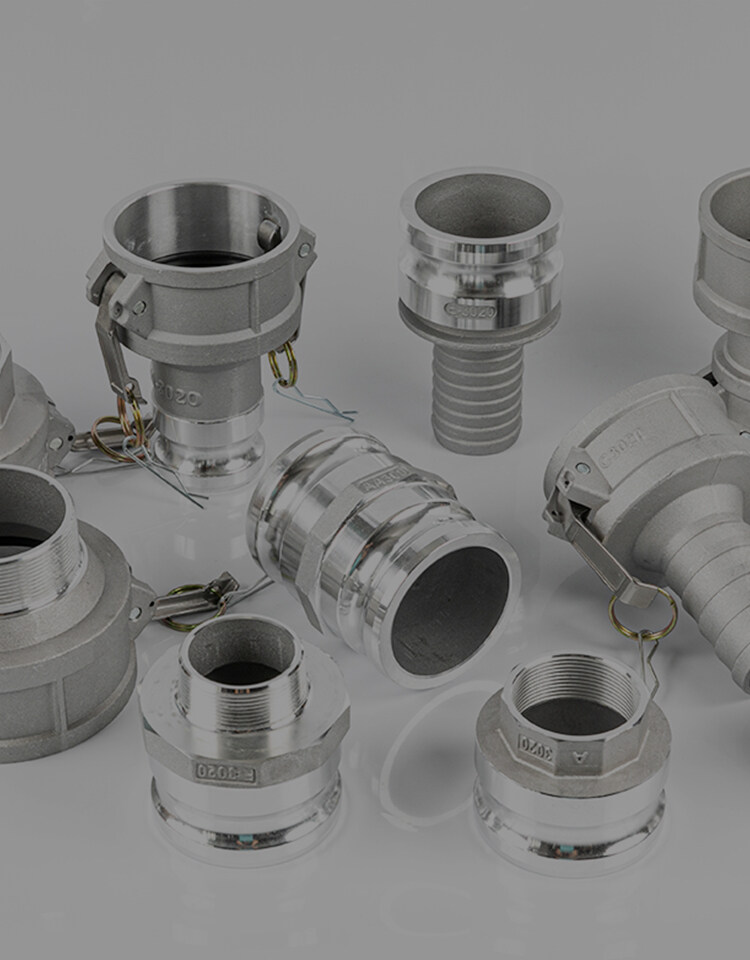Email format error
Email cannot be empty
Email already exists
6-20 characters(letters plus numbers only)
The password is inconsistent
Email format error
Email cannot be empty
Email does not exist
6-20 characters(letters plus numbers only)
The password is inconsistent

News
Here, you can describe a piece of text you want to express

Unveiling the Coupling Manufacturing Process: A Deep Dive into Industrial Symbiosis
The coupling manufacturing process is a sophisticated dance of engineering precision, material science, and quality control. It is a process that transforms raw materials into the critical mechanical components that form the backbone of countless machines. In this blog post, we will explore the intricate steps involved in the production of couplings, the role of specialized factories, and the global network that brings these essential components to the market. As we navigate through the stages of manufacturing, we will touch upon the contributions of coupling nuts factories, the supply chain intricacies of coupling nut supply co, the innovation-driven approach of coupler enterprises, the strategic distribution by coupling distributors, and the significant role played by coupling manufacturers in China.
The Anatomy of a Coupling
Understanding the Role of Couplings in Machinery
Couplings are mechanical devices used to connect two shafts together while transmitting power and accommodating misalignment, end movement, or both. Their role is crucial in machinery across various industries, from the massive turbines in power plants to the precision-driven spindles in CNC machines. Without couplings, the transfer of motion would be inefficient, leading to increased wear and potential failure of key components.
Key Types of Couplings and Their Applications
There are several types of couplings, each designed for specific applications and operational requirements. Rigid couplings are used when precise shaft alignment is necessary, while flexible couplings can tolerate some misalignment and are better suited for applications where shafts are likely to move or shift. Other types include fluid couplings, which use a hydraulic fluid to transmit power, and magnetic couplings, which rely on magnetic forces.
The Journey from Raw Material to Finished Product
Material Selection: The Foundation of Quality
The coupling manufacturing process begins with the selection of materials. The choice of metal—whether it’s steel, aluminum, brass, or another alloy—depends on the coupling’s intended use and the environmental conditions it will face. For example, stainless steel is often chosen for its corrosion resistance, while high-carbon steel might be selected for its strength and durability.
Forging and Machining: Shaping the Future of Couplings
Once the material is chosen, the manufacturing process typically starts with forging, where the metal is heated and shaped into a rough form of the coupling. This is followed by machining, a process that refines the forged part into its final shape with high precision. Advanced CNC machines play a pivotal role here, ensuring that each coupling meets exact specifications.
Heat Treatment: Enhancing Strength and Durability
After machining, couplings often undergo heat treatment to improve their mechanical properties. Processes like annealing, quenching, and tempering can increase toughness, reduce brittleness, and enhance wear resistance. This step is critical for ensuring that the coupling can withstand the stresses of operation without failure.
Finishing Touches: Precision Engineering at Its Finest
The final steps in the coupling manufacturing process include surface finishing techniques such as grinding, polishing, and coating. These processes not only give the coupling a smooth and aesthetically pleasing finish but also protect it from environmental factors that could lead to degradation over time.
Quality Control in Coupling Manufacturing
Rigorous Testing Protocols
Quality control is an integral part of the coupling manufacturing process. Each coupling is subjected to a series of tests to ensure it meets all performance criteria. These tests might include dimensional checks, material composition analysis, and fatigue testing to simulate the stresses the coupling will encounter in service.
Certification and Standards Compliance
Drive shaft coupling suppliers must comply with a range of industry standards and certifications, such as ISO 9001 for quality management systems. These standards ensure that the products are manufactured to consistent and high-quality levels, providing peace of mind to customers and end-users.
The Role of Continuous Improvement
The best coupling manufacturers embrace a philosophy of continuous improvement, constantly seeking ways to enhance their processes and products. This might involve investing in new technologies, training staff in the latest manufacturing techniques, or implementing feedback from customers to refine product designs.
The Global Network of Coupling Production
Coupling Nuts Factories: Securing the Connections
In the realm of coupling manufacturing, the production of coupling nuts is a specialized niche. These factories are dedicated to crafting the threaded heroes that hold coupling systems together. With precision lathes and thread rolling machines, coupling nuts factories produce a variety of nuts that must meet exacting standards. The nuts are engineered to withstand the forces they will encounter in service, ensuring a secure fit and reliable performance.
Coupling Nut Supply Co: The Link in the Chain
The coupling nut supply co plays a pivotal role in the supply chain, acting as the crucial link between the manufacturers of coupling nuts and the industries that require them. These companies specialize in the distribution of high-quality coupling nuts, providing a diverse inventory that caters to the specific needs of different applications. Their expertise in logistics and inventory management ensures that the right products are available at the right time.
Coupler Enterprises: Pioneering Innovations in Coupling Technology
Coupler enterprises are at the forefront of innovation in the coupling industry. These companies invest heavily in research and development to push the boundaries of what is possible with coupling technology. From developing new materials that offer better performance to designing couplings that can be easily integrated into smart machinery, these enterprises are shaping the future of mechanical power transmission.
Distribution and Logistics
Coupling Distributors: Bridging the Gap Between Manufacturers and Markets
The distributors serve as the vital link that bridges the gap between the manufacturers of couplings and the end-users. These distributors maintain extensive networks that enable them to deliver products efficiently across the globe. They work closely with manufacturers to understand their product offerings and with customers to understand their needs, ensuring that the right coupling solutions are delivered where and when they are needed.
The Strategic Importance of Inventory Management
Effective inventory management is a strategic component of the coupling distribution process. By maintaining optimal levels of stock, distributors can respond swiftly to market demands without incurring the costs associated with overstocking. Advanced inventory management systems and forecasting tools are employed to predict customer needs and to plan for seasonal fluctuations or market trends.
Navigating Global Logistics in a Connected World
In today’s connected world, the ability to navigate global logistics is a competitive advantage for coupling distributors. With the challenges of international shipping, customs regulations, and the need for timely delivery, distributors must be adept at planning and executing complex logistics operations. This often involves partnerships with reliable carriers and logistics providers to ensure a smooth and efficient supply chain.
The Impact of Coupling Manufacturing in China
Coupling from China: A Hub of Manufacturing Excellence
China has emerged as a hub of manufacturing excellence, particularly in the coupling industry. The coupling from China show the high-quality couplings at competitive prices. With state-of-the-art facilities and a skilled workforce, Chinese manufacturers are able to meet the high demands of both domestic and international markets.
The Influence of Chinese Manufacturing on Global Supply Chains
The influence of Chinese manufacturing on global supply chains is undeniable. With its vast manufacturing capabilities, China plays a critical role in the availability and pricing of couplings worldwide. Companies around the globe rely on Chinese manufacturers for a steady supply of couplings, which are integral to the operation of machinery in various industries.
Adapting to the Evolving Landscape of International Trade
As the landscape of international trade continues to evolve, coupling manufacturers in China and elsewhere must adapt to changing regulations, tariffs, and trade agreements. Staying informed and flexible allows these manufacturers to navigate the complexities of international trade and maintain their position in the global market.
The Future of Coupling Manufacturing
Emerging Technologies and Their Impact on Production
The coupling manufacturing industry is on the cusp of a technological revolution. Emerging technologies such as additive manufacturing, also known as 3D printing, are enabling the creation of complex coupling geometries that were once considered impractical or too expensive to produce. This technology allows for rapid prototyping, customization, and on-demand production, which can significantly reduce lead times and inventory costs.
Another transformative technology is the Internet of Things (IoT), which is making its way into the manufacturing process. Smart sensors embedded in machinery can collect data on performance and wear, leading to predictive maintenance and reduced downtime. Coupler enterprises are also exploring the use of advanced robotics and automation to increase efficiency and precision in the manufacturing process.
Sustainability and Eco-Friendly Manufacturing Practices
Sustainability is becoming a cornerstone of modern manufacturing, and the coupling industry is no exception. Manufacturers are increasingly adopting eco-friendly practices, such as using recycled materials and reducing energy consumption during production. By minimizing waste and improving energy efficiency, coupling manufacturers are not only reducing their environmental footprint but also cutting costs and passing those savings on to their customers.
In addition to material and energy considerations, the lifecycle of the product is also a focus. Designing for durability and ease of recycling at the end of life is becoming more prevalent. This cradle-to-cradle approach ensures that every stage of the coupling’s life is as environmentally friendly as possible.
The Role of Automation and AI in the Manufacturing Process
Automation and artificial intelligence (AI) are playing an increasingly significant role in the coupling manufacturing process. From automated assembly lines that increase production speeds to AI algorithms that optimize the supply chain, these technologies are making the manufacturing process smarter and more responsive to market demands.
AI, in particular, is being used to analyze vast amounts of data to improve quality control, predict maintenance needs, and even tailor product offerings to individual customer requirements. As these technologies continue to advance, they will further enhance the capabilities and competitiveness of coupling manufacturers.
Conclusion: The Art and Science of Manufacturing Couplings
The Critical Importance of the Coupling Manufacturing Process
The coupling manufacturing process is a blend of art and science, requiring a deep understanding of engineering principles, material properties, and the needs of the end-user. As we have seen, the process involves a series of intricate steps, each critical to the final product’s performance and reliability.
Embracing Challenges and Opportunities Ahead
The industry faces challenges such as fluctuating raw material costs, evolving industry standards, and the need to continuously innovate. However, these challenges also present opportunities for manufacturers to improve their processes, embrace new technologies, and strengthen their market position.
The Continuous Pursuit of Excellence in Coupling Manufacturing
The pursuit of excellence in coupling manufacturing is unending. Manufacturers who invest in research and development, adopt sustainable practices, and leverage the latest technologies will lead the way in this dynamic industry. As the demand for more efficient, reliable, and eco-friendly couplings grows, the manufacturers who can meet these demands will shape the future of industrial machinery and power transmission.
